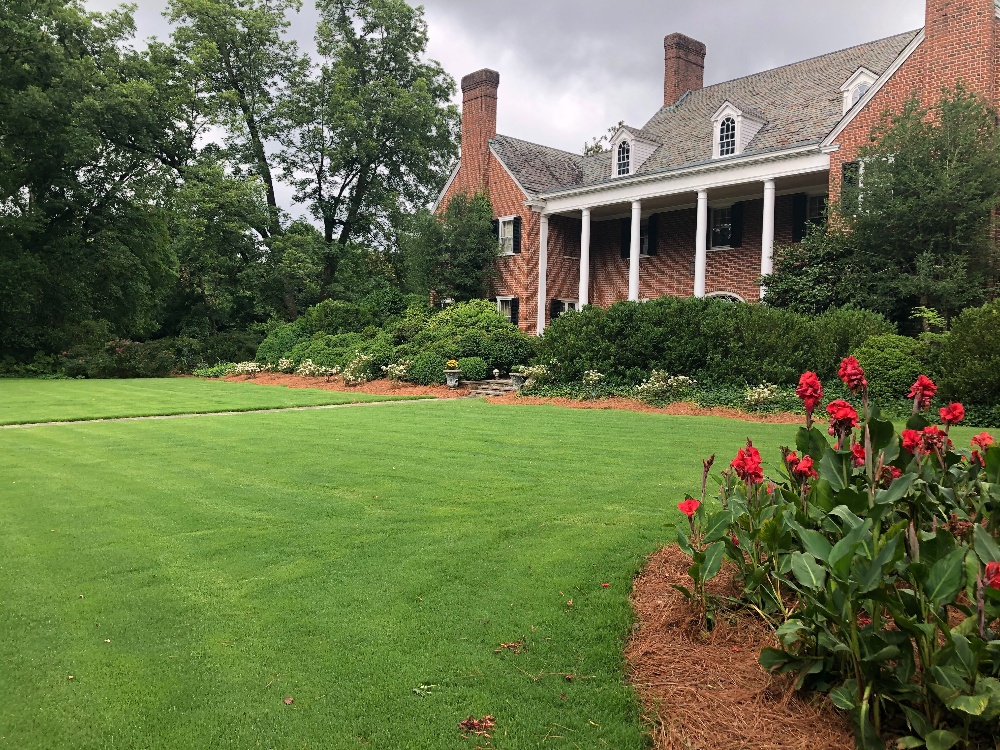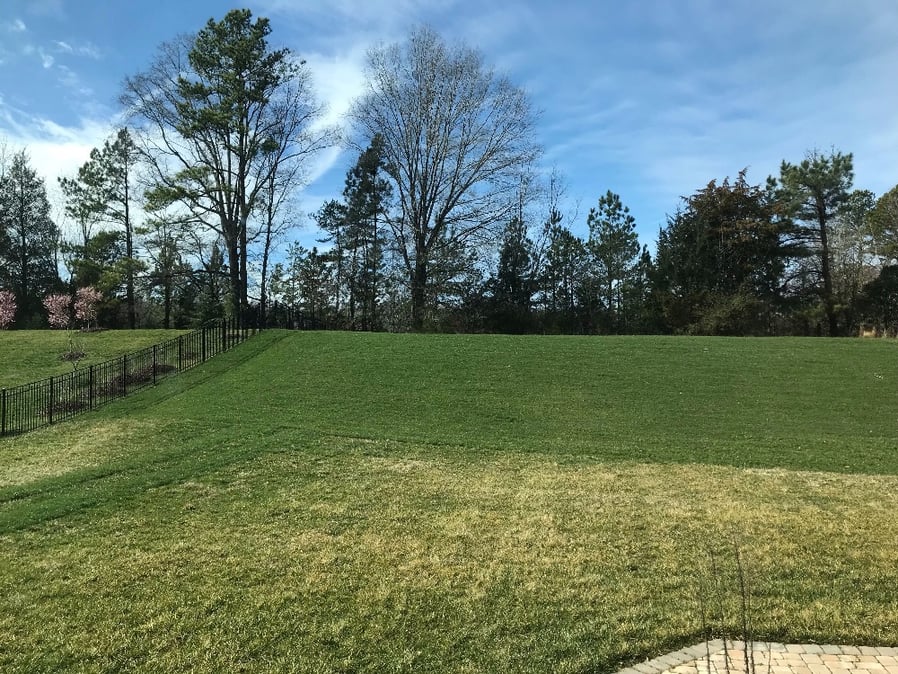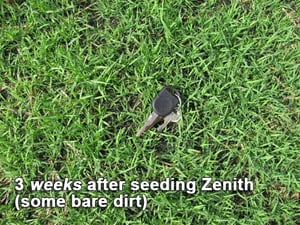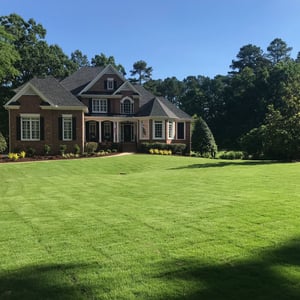Preparing the soil is a crucial step in laying new sod. Would you lay a carpet without underlayment? A similar concept applies to improving your soil for your new sod—you want the best foundation possible.
Soil³ compost gives you that foundation by improving the quality of your dirt. Adding our compost improves aeration, reduces compaction, adds nutrients, neutralizes pH, and more! Learn all the reasons by reading New Lawn Preparation with Compost.
The Zeon Zoysia lawn in the picture above was laid with Soil³ compost worked into the ground. Likewise, the TifTuf Bermudagrass lawn below was installed with a layer of Soil³ compost worked into the soil before laying the sod. These are picture-perfect lawns!

Steps for Laying New Sod with Soil³ Compost
Now that we've inspired you to improve your dirt with Soil³ compost, let's explain how to go about transforming your yard by laying new sod.
- Clean the Slate: If renovating an existing lawn, destroy the current vegetation. You can use a sod cutter or kill-all herbicide. There are newer, more environmentally options available (they might require repeat applications—so plan to start this process weeks in advance).
- Grade: Prepare the site by grading so that the soil slopes away from foundations and buildings, thus avoiding drainage problems.
- Till or Rake: Using Soil³ humus compost: Mix the compost with the top layer of existing soil. Tilling is ideal, but simply raking the compost into the existing top soil is usually sufficient.
- Smooth and Remove: Smooth the soil with a rake and remove objects that will prevent good root to soil contact, such as rocks, roots, clods, and vegetation.
- Test Runoff: Water heavily to see if water puddles in any low spots, and if it does, add soil and/or regrade to eliminate low spots.
- Check Height: Keep soil surface 1/2" below walks and drives to allow for the height of the sod when placed on top. Keep in mind that tilled soil will settle some.
- Hold off on Fertilizer: Our experience shows that no pre-planting fertilizer is necessary when using Soil³ compost. However, plant to fertilize in the following months.
- Apply Lime: Apply and rake in dolomitic lime based on soil test results and based on the type of sod you have. Not all turfgrass needs lime. For example: Centipede sod typically doesn't need lime because it likes a pH in the 5 to 6 range but Tall Fescue likes a higher pH between 6.5 to 7.5 so often needs lime. On the soil sample paperwork, note the type of lawn you'll install and the report will tell you how much lime you need for that type of sod.
- Lay Sod: Lay the sod rolls perpendicular to slopes and stagger them in a brick-like fashion. Tightly butt the edges against each other to prevent weeds from poking through. Detailed sod installation info is on Super-Sod's website under How to Lay Sod.
- Water the Sod: Water the sod as you go, especially on hot, sunny days. After you're done laying all the sod, water enough to keep the sod moist but not sopping wet, according to our pointers on Watering New Sod.
How Much Soil³ Compost to Use
- We recommend 1 cubic yard BigYellowBag for every 2 pallets of sod (that's 1,000 square feet of sod).
- Not sure how much you need for your lawn or garden project? Calculate it on our Compost Calculator!
The Tall Fescue sod in the front was laid without Soil³ compost. For their second round, the customer decided to add Soil³ compost (verdant sod in the back). The quality difference is obvious: lush green with Soil³ and brownish without. Photo by Stephen Raiford, Super-Sod of Mooresville, NC store manager.
Ready for your new sod with Soil³?
We offer Soil³ in a Mini Cube (1 cubic foot) or 1 cubic yard in a BigYellowBag.
For your convenience, we will deliver the BigYellowBag to your location or visit your local Soil³ dealer to pick up Mini Cubes.




Did this help you out? Have any questions for clarity? Leave a comment below!